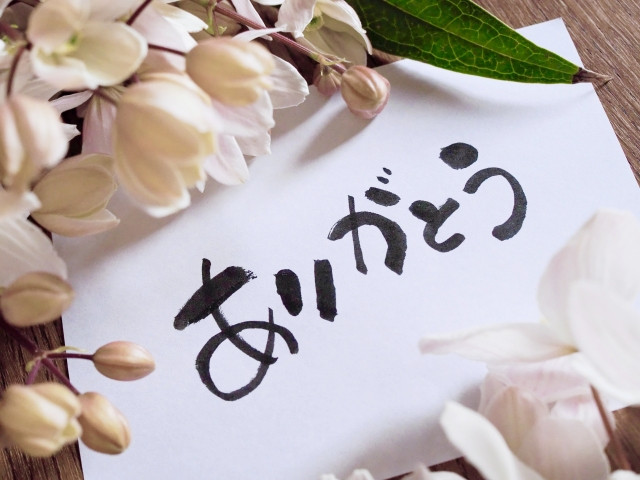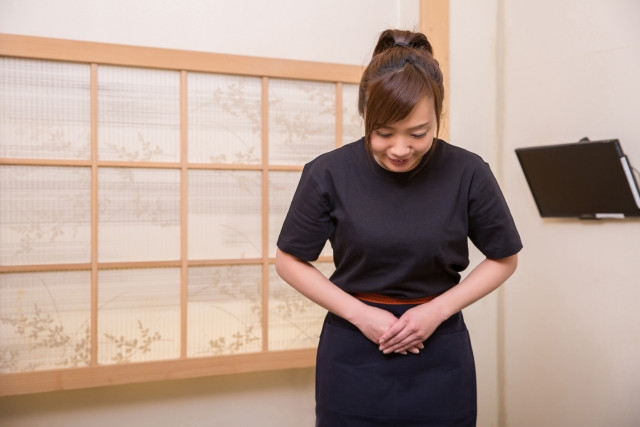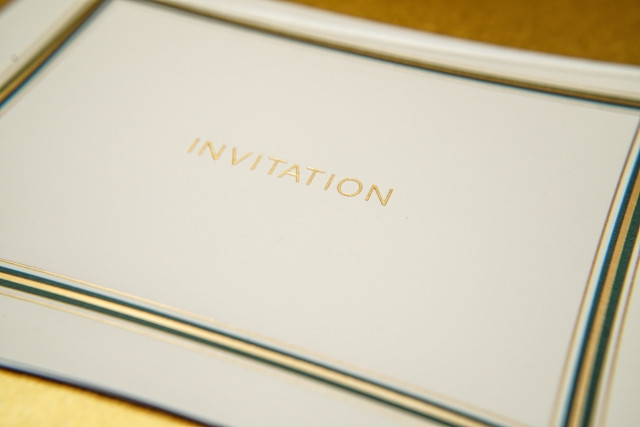In a culture of valuing hospitality, it’s important to know how to express gratitude whether you are the host or the guest. Learn how to say “Thank you for coming” and “Thank you for inviting me” in Japanese for both formal and casual situations.
Table of Contents
- The Culture of Omotenashi
- How to say “Thank you for coming” in Japanese
- How to say “Thank you for inviting me” in Japanese
- Other ways to say “Thank you” in Japanese
The Culture of Omotenashi
In Japan, the act of being hospitable is mirrored in おもてなし or omotenashi - the core of hospitality in Japanese culture. It is quite known that the Japanese are committed to providing wholehearted services and entertainment in a gracious and courteous manner. This attitude of devotedly looking after guests and visitors focuses on rendering services with care rather than just merely going through what is expected of being hospitable is the root of omotenashi, and both Japanese nationals and tourists enjoy being treated in this way when on the receiving end of services.

Sen no Rikyu, the respectable Japanese tea ceremony master, is most often attributed to the origins of omotenashi. Sen no Rikyu believed that every guest's experience must be treated as an exemplary event, paying attention to every detail of the service to provide a memorable experience. Consequently, it is expected that both the host and the guest remain humble and grateful.
For people coming from countries that have a tip system, it can be shocking that in most cases you will receive excellent service in Japan with no requirement to pay a tip. Good service is the standard, and in turn, bad or sometimes even simply mediocre service stands out as irregular and can really damage an establishment’s reputation.
Thus, if you are working a job where you will be serving customers, a portion of your job training will include how to greet customers, practicing tone of voice, bowing, and so on.
The Importance of Expressing “Thank you for coming” & “Thank you for inviting me”
One of the parts of omotenashi is to express gratitude verbally toward the guest for coming to the establishment or an event itself. This is especially important if the guest has traveled far. Of course, action will follow the words, but thanking the guests verbally upon their arrival is a key part of showing appreciation and hospitality.
In turn, the guest will show gratitude towards the host who invited them. This is especially important if you have been invited to their home, as many people generally don’t casually invite people to their homes and instead meet outside like a cafe or restaurant, especially in bigger cities. Thus, there is a cultural tradition of bringing a gift when visiting a person’s home, as they’ve invited you into their personal space.
Whether you’re the inviter or invitee, host or guest, it’s important to know what to say, so let’s take a look!
Writer's Pick
How to say “Thank you for coming” in Japanese

First off, most people know how to say “Thank you” in Japanese, but if you don’t know:
-
ありがとう (arigatou) is the most basic and casual way of saying thank you.
-
It can be made formal by saying ありがとうございます (arigatou gozaimasu).
-
ありがとうございました (arigatou gozaimashita) is the past tense form.
-
It can also be made even more formal by saying どうも ありがとうございます (doumo arigatou gozaimasu) or どうも ありがとうございました (doumo arigatou gozaimashita).
Here’s a thorough article about how to say thank you in Japanese:
Arigatou and more: How to Say Thank You in Japanese in All Types of Situations
The casual way to say “Thank you for coming” in Japanese
The most basic and casual way to say “thank you for coming” is:
-
来てくれてありがとう。
Kite kurete arigatou.
This is basically “Thank you / Thanks for coming”. You would use this with good friends and family, whether you’ve invited them to your house, a performance, an event, etc. or they accompanied you to something.
(Note: If they accompanied you to something, you can also say 一緒に来てくれてありがとう (Issho ni kitekurete arigato) or “Thanks for coming with me.”)
You can use it in the following situations (You can add ございます “gozaimasu” at the end of these situations to make it a little more formal):
-
会いにきてくれてありがとう。
Aini kite kurete arigatou.
Thank you for coming to see/meet me. -
今日は来てくれてありがとう。
(Kyou wa kite kurete arigatou.)
Thank you for coming today.
Even when referring to specific situations, we often leave off the noun for the occasion (party, recital, home) on the actual day of and just use 来てくれてありがとう (kite kurete arigatou). But when written or when referring to a past event , please include it.
-
Thank you for coming to my birthday party.
誕生日会に来てくれてありがとう。
Tanjoubikai ni kite kurete arigatou. -
Thank you for coming to my performance/recital.
発表会に来てくれてありがとう。
Happyoukai ni kite kurete arigatou. -
Thank you for coming to my home.
家に来てくれてありがとう。
Ie/Uchi ni kite kurete arigatou.
The formal way to say “Thank you for coming” in Japanese

For a more polite “thank you for coming”, we would say:
-
来ていただきありがとうございます。
Kite itadaki arigatou gozaimasu. -
来てくださりありがとうございます。
Kite kudasari arigatou gozaimasu.
And in even more formal Japanese, “thank you for coming” used in all official events is said:
-
お越しいただきありがとうございます。
Okoshi itadaki arigatou gozaimasu. -
お越しくださりありがとうございます。
Okoshi kudasari arigatou gozaimasu.
Note: The difference between itadaki and kudasari comes down to complex nuance, but both are used to ultimately mean the same thing.
Specific situations
And in formal business Japanese, we have to change the form of the word “to come” entirely to suit the situation. You may hear and/or use these when shopping, at an event and when doing business.
-
Thank you for coming to this store.
ご来店ありがとうございます。
Goraiten arigatou gozaimashita -
Thank you for coming to this event/place.
ご来場ありがとうございます。
Goraijou arigatou gozaimashita -
Thank you for coming to my (company) office.
ご来社いただきありがとうございます。
Goraisya itadaki arigatou gozaimashita -
Thank you for visiting.
ご来訪いただきありがとうございます。
Goraihou itadaki arigatou gozaimashita
Other Key Points
-
In formal Japanese, instead of saying 今日 (kyou) for today, we say 本日 (honjitsu).
-
You may often hear the word わざわざ (waza waza) attached to the front - it means to go out of one’s way.
-
And for extra emphasis on your appreciation/formality, you can add 誠に (makoto ni - truly) in front of arigatou gozaimashita and say 誠にありがとうございます。(Makoto ni arigatou gozaimasu.)
-
ございます (gozaimasu) is used at the beginning and throughout the event, and ございました (gozaimashita) would be used at the very end of the event or after the event.
How to say “Thank you for inviting me” in Japanese

So what if you’re the guest?
The casual way to say “Thank you for inviting me” in Japanese
Said to the host of the event/home:
-
呼んでくれてありがとう。 (Yonde kurete arigatou.) - usually used when you're invited to someone's home
-
招待してくれてありがとう。 (Shoutai shitekurete arigatou.) - usually used when invited to an event
Said to the person who invited you but they're not necessariy the host of the event/activity (eg. Your friend invites you to a concert or movie.) :
-
誘ってくれてありがとう。 (Sasotte kurete arigatou)
We use all three examples all the time.
The formal way to say “Thank you for inviting me” in Japanese
-
ご招待いただきありがとうございます。
Goshoutai itadaki arigatou gozaimasu. -
お招きいただきありがとうございます。
Omaneki itadaki arigatou gozaimasu.
Similar notes about how to use these phrases:
-
Kudasari can be used intead of itadaki.
-
ございます (gozaimasu) is used at the beginning and throughout the event, and ございました (gozaimashita) would be used at the very end of the event or after the event.
-
When writing a thank you card or when referring to a past event, please include the word for the specific event/situation you are referring to at the beginning of the sentence.
Other ways to say “Thank you” in Japanese

We hope this article was helpful to understand how to say both "Thank you for coming" and "Thank you for inviting me" in Japanese as well as the culture behind it.
Take a look at some of our other articles covering different ways to say Thank you in Japanese:

































